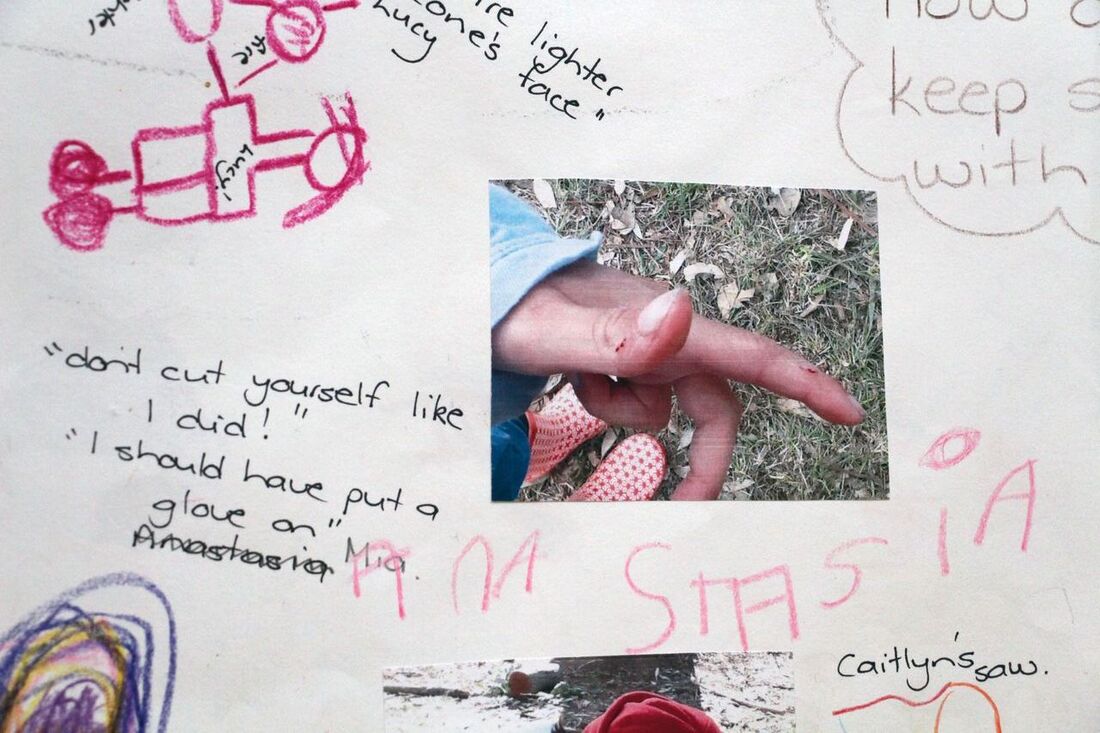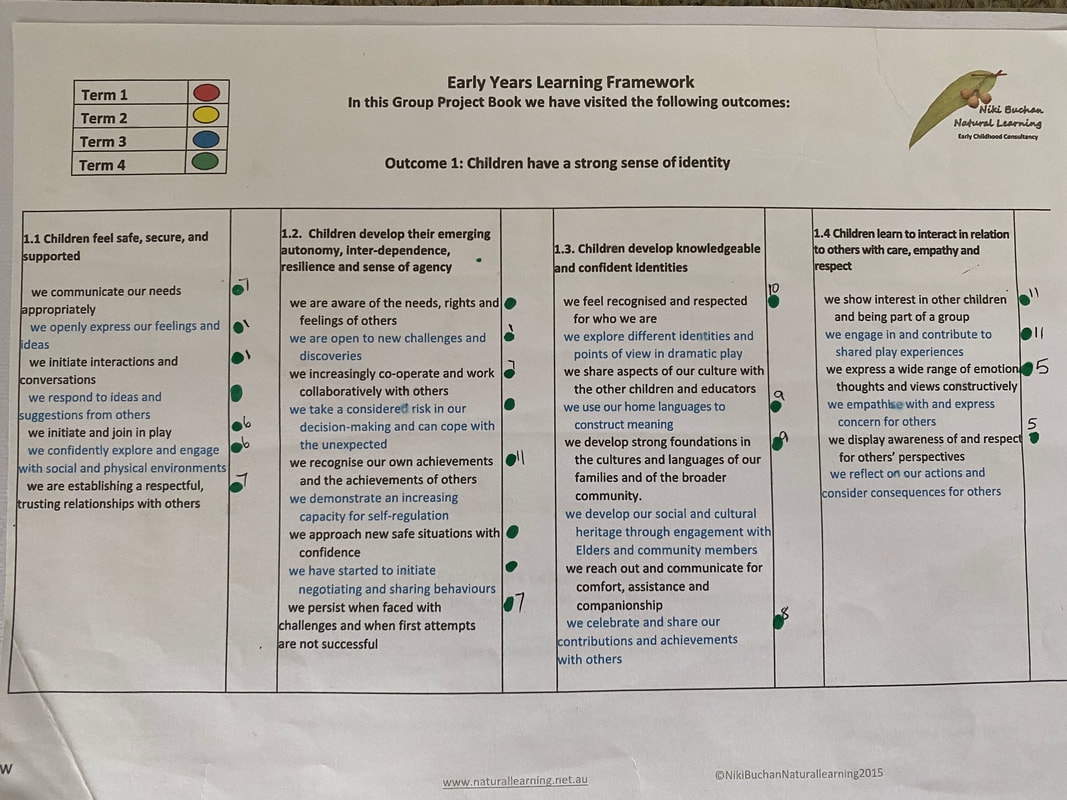Natural Learning
Meaningful Documentation WITH and FOR children through child led, Inquiry-based explorations.
|
A simple and effective visual form of documentation that engages parents and children. Significantly, the documents HIGHLIGHT the learning and development identified by educators, really making this visible to families and helping them to appreciate the value of children's play and the process of learning and development. This methodology directly benefits children and educators. Children are actively involved in the process realising that their efforts are valued and developing the skills for school. Educators and children actively engage with the documentation during the session creating a community of learning. The Australian Learning Tracks framework™ concept was developed by me in 2012 and consists of four documents. Any information that, in the professional opinion of the educator, should be documented is recorded in one of these four. I promote the following four meaningful documents; 1. Big BIG Book, a group project journal as labelled by the children 2. Individual Journal, 3. Community Sharing Book 4. Planning and Reflection File. This simple framework is Australia specific, links to the NQS and meets the requirements of the NQF while supporting the fundamental principles of the Reggio Emilia and Project Approach. What is the Project Approach? This method has been a part of educational experiences since at least the 1920s and the work of John Dewey. A project is an extended study of a topic usually undertaken by a group of children, sometimes by a whole class, and occasionally by an individual child. The study is an investigation into various aspects of a topic that are of interest to the participating children and judged worthy of their attention by their teachers. (Roopnarine & Johnson, 2005, p. 209) The Reggio Emilia Approach emphasises that: Children are capable of driving their own learning through their interests. Children are communicators and communicate in a multitude of ways Children are social collaborators who work in groups where everybody is equal and all contributions are valued Children are able to lead their own projects, which are not pre-planned but emerge based on the child’s interests. The adult is the mentor and guide. Children’s thoughts and progression of thinking;is documented in many different ways to show the child's learning process and make the learning visible. Children need hands-on discovery learning that allows them to use all their senses and all their languages to learn. |





